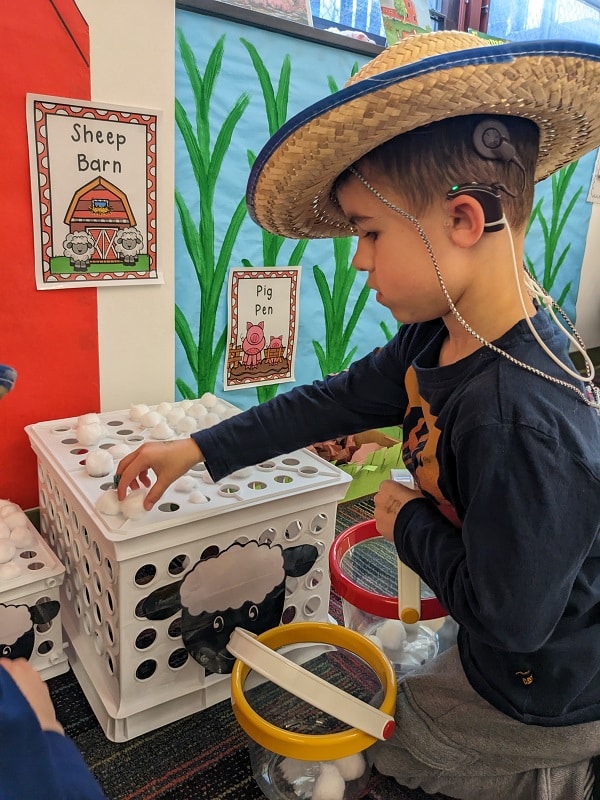Cochlear Implants – The What, Who, and When
By Sara Baines-Miller | Posted on: April 1, 2020

Cochlear Implant technology has advanced leaps and bounds over the last 30+ years. From their first adult uses in the mid-1980s to the first infant (older than 12 months) uses in 2000, cochlear implants have enabled wearers to access sounds and speech in different ways.
What are Cochlear Implants
Cochlear implants are electronic devices that help provide a sense of sound to a person who has experienced substantial hearing loss. They consist of an external portion that rests behind the ear and another portion that is surgically placed under the skin. The external and internal pieces consist of 4 parts – a microphone, a speech processor, a transmitter and receiver/stimulator, and an electrode array. These parts interact to give a person with hearing loss “a useful representation of sounds in the environment and help him or her to understand speech” (Source: National Institute on Deafness and other Communication Disorders). While hearing aids amplify sounds, cochlear implants directly stimulate the auditory nerve with signals which then travel to the brain and get recognized as sound.
Who can Receive Cochlear Implants
According to Mayo Clinic, there are 5 requirement for eligibility to receive a cochlear implants:
- Hearing loss that is so severe it interrupts spoken communication
- Limited benefit from hearing aids as determined by specialized hearing tests
- There are no medical conditions or factors that may increase health risks for placing cochlear implants
- High motivation to participate in rehabilitation sessions and to be part of the hearing world
- Clear understanding of what cochlear implants can and cannot do for hearing.
Speech and hearing are traditionally learned more easily if cochlear implants are put in place early in life, but older kids and adults can decide to get implants as well. At DePaul School for Hearing and Speech, we teach children who use cochlear implants and/or hearing aids to listen and speak. Our goal for all our students is to have them return to their neighborhood schools with the skills to easily interact in the speaking and hearing environment. Many children who receive cochlear implants very early in life develop language skills at a rate comparable with the children who do not have hearing loss.
When to Get Cochlear Implants
Studies have shown that those who received cochlear implants sooner after hearing loss are able to hear more and have improved speech skills over those that waited a significant time. According to some, “the earlier the implant occurs the greater the chance of the implant providing sufficient sound input to provide speech understanding.” When auditory training and speech therapy are combined with the cochlear implant, individuals develop better hearing and speech.
Cochlear implants are just one way that children and adults who have experienced hearing loss can communicate. The devices themselves have both exterior and interior parts and can be implanted is both children and adults with significant hearing loss. Chances of success in hearing and speech are increased when the procedure is done in a shorter period of time after the hearing loss. Through the aid of cochlear implants, children and adults who previously had hearing loss are often able to enjoy hearing and speaking with those around them.
Share This Article:
